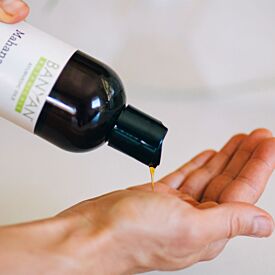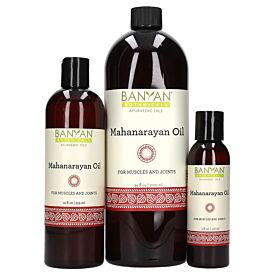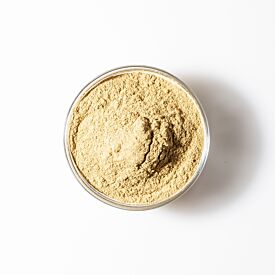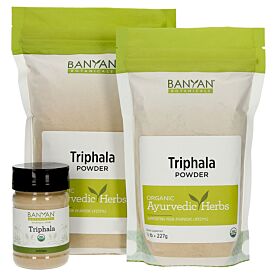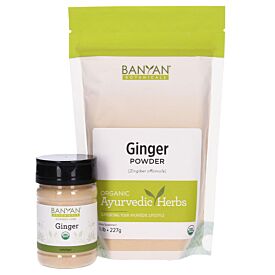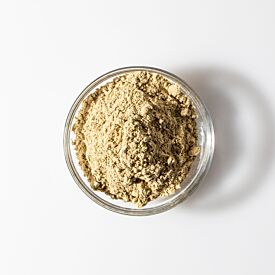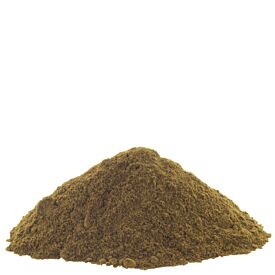Strong Joints for Mobility and Freedom
Crackling. Crunching. Popping. Crisp. Hues of red. You may think that I am describing the fall/winter vata weather as the leaves change and fall to the ground. But if instead I am describing the condition of your joints (or those of many of your clients), then you will want to continue reading our discussion on joint health in this issue. The CDC estimates that about 50 million adults in the U.S. have joint issues; that is about 1 in 5 Americans. 1 Considering joint health from an Ayurvedic perspective can help alleviate this number.
The joints are a critical part of the body, though often overlooked until they start creating problems. Let’s briefly review the anatomy of joints. Joints, also called articulations, occur where two bones come together. There are actually three different types of joints, classified based on their mobility. 2 Synarthroses joints are immovable joints, such as the joints that occur between the bones of the skull. Amphiarthroses are slightly movable joints, such as the joints that occur between the vertebral bones in the spine. And diarthroses are freely movable joints, which make up the greatest number of joints and are the ones that we routinely think of when we use the word joint; examples of diarthroses joints would be the knee, hip, and elbow. It is these diarthroses joints that we will particularly consider in this article.
A Closer Look at Diarthroses Joints
Diarthroses joints have multiple components,3 seen in the image below. Between the two bones there is a layer of articular or hyaline cartilage, which provides cushion and keeps the bones from eroding by preventing them from rubbing against each other. There is also a synovial membrane, which lines the joints and forms a capsule around it. The synovial membrane secretes synovial fluid, a viscous fluid which serves to lubricate the joint to allow for smooth, effortless motion. These joints are also called synovial joints, implying the critical nature of a healthy synovial membrane and fluid. To further prevent friction, there are also fluid-filled sacs called bursas, which can be found between bones, ligaments, and other structures. Ligaments are a type of strong connective tissue that connect to bone on both sides and provide stability and structure to the joint, so that the motion of the joint is limited only to appropriate movements. And there are also tendons, which are also strong bands of connective tissue, and which connect to bone on one side and muscle on the other side; these tendons allow the muscles to control the movement of the joints by pulling on the bones.
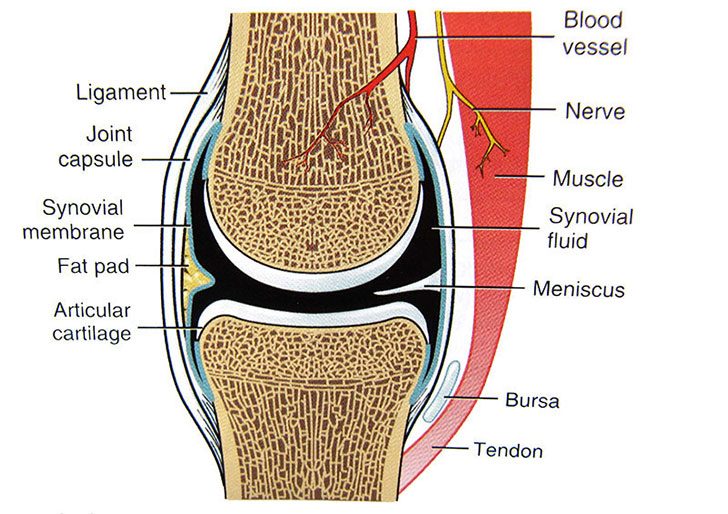
In terms of function, the most important and obvious function of joints is to allow the body to have mobility. It is because of the joints that we are able to flex, extend, abduct, adduct, and rotate. Structurally, joints also hold the skeleton together in a particular form, allowing for the connection of bones throughout the body.
How Ayurveda Views Joint Health
Now for the Ayurvedic perspective; joint health can be affected by two major issues: imbalanced doshas and the presence of ama (natural buildup of toxins).
Vata Imbalance
Imbalanced vata brings vitiated air and space to the joint. Excess of the dry, light, rough, cold qualities can cause erosion and dryness in the joint space. This usually manifests as loss of the lubricating synovial fluid, followed by wearing down of the cartilage, and finally erosion of the bone itself from dry friction. Excess vata can also affect the stability of the joint by making the ligaments and tendons more prone to strain injuries and hypermobility or laxity, allowing the joint to move beyond its normal range of motion and leaving room for injury. Vata in the joints creates the typical cracking and popping sounds. This type of imbalance usually gets worse with activity and feels better with rest, and warmth and lubrication can help soothe vata in the joints.
Pitta Imbalance
Pitta, when it is vitiated, brings fire to the joint, creating heat. Although imbalanced pitta in the joints is often seen after acute injuries, it can also have a chronic component. Pitta imbalance can cause discomfort even without movement, and the sensation is often sharp, stabbing, or burning in nature; cooling treatments help soothe the pitta-type imbalance.
Kapha Imbalance
Kapha imbalance brings the dense earth and water qualities to the joints. The joints can be uncomfortable and stiff, but also cold to the touch. The sensation is usually dull and aching in nature, and both warmth and movement can relieve it.
The Role of Ama
In addition to imbalanced doshas, ama is a significant factor. Ama occurs when natural toxins build up in the body, due to low agni, poorly digested food, environmental exposures, and insufficient removal of wastes (irregular bowel movements, and so forth). Ama, as it settles in the joints, causes effects similar to the those of imbalanced pitta. The key to balance is to address kindling of the agni as well as complete elimination of wastes through regular bowel movements.
The allopathic diagnosis of various types of joint imbalances can be correlated with an Ayurvedic perspective, often combining multiple vitiated doshas and/or the presence of ama. From an Ayurvedic perspective, it is key to understand that vata is involved in most of these imbalances, along with other aggravated doshas and ama.
Supporting the Joints
Getting to the core of the imbalance is key. Ayurveda provides a well-rounded protocol for bringing balance back to the body. Once the imbalance is determined, you can move forward and create a specific protocol that will address the needs of the client. A cleanse may be called for and, in deeper-seated conditions, consider panchakarma.
Diet and Lifestyle
Reducing imbalance through diet and lifestyle is often a key place to start. This can be achieved by supporting a healthy diet and regular bowel movements and focusing on the dosha that needs balance the most. Reducing excess vata is often necessary, as this is often the first dosha to go out of balance.
Herbs
Depending on the client and the dosha needing attention, the following herbs and formulas can be helpful. Especially with vata imbalances, healthy bowel movements are key, as the colon is the seat of vata, and vitiated vata must be flushed from the system. Triphala is the all-around go-to for maintaining regularity and supporting healthy digestion and absorption. It is balancing for all doshas. The use of guggulu can also address the ama by gently scraping away natural toxins and can be added when appropriate. Kindling agni is important and, depending on the dosha that needs support, Vata, Pitta, and Kapha Digest can be helpful. Herbs like ginger and pippali can further kindle agni.
Oils and Balms
Mahanarayan Oil and/or Joint Balm can provide lubrication as well as vata-dispelling and tissue-nourishing herbs. Mahanarayan Oil can also be soothing and calming.
Yoga
Yoga and exercises to strengthen the muscles are particularly helpful, as strong muscles can remove stress from the joints. Choose yoga poses and exercises that will support the imbalance.



